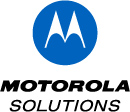RFID in Health Care 2014
November 20, 8:30 am - 5:30 pm
Moderators:
- Mark Roberti, Founder and Editor, RFID in Health Care 2014
Moderators:
- Elizabeth J. Hickle, MPA, LNHA, CDP, Executive Director, RFID in Health Care 2014
Moderators:
- David Rutherford, RN MSN CCRN, Nurse Manager, RFID in Health Care 2014
Presenters:
- Jean-Claude Saghbini, General Manager, Inventory Management Solutions, Cardinal Health Inventory Management Solutions
- Chris Schaefer, Senior Director, Global Market Development, Motorola Solutions
Moderators:
- Mark Roberti, Founder and Editor, Motorola Solutions
Moderators:
- Terry J. Broussard, RN, BSN, MPA, VP of Support Services, Motorola Solutions
Moderators:
- Mark Rheault, Director of Enterprise Visibility, Motorola Solutions
Moderators:
- Halsey Bagg, Health Systems Engineer, Motorola Solutions
Moderators:
- Michael Hopkins, Director of Supply Chain Operations and Logistics, Motorola Solutions
Moderators:
- Jean-Claude Saghbini, General Manager, Inventory Management Solutions, Motorola Solutions
Radio frequency identification is a valuable tool for improving asset-utilization rates, reducing the incidence of lost or stolen equipment, dramatically cutting the time nurses waste looking for equipment, improving patient outcomes and much more. RFID in Health Care, RFID Journal’s 10th conference focused on this sector, is designed for executives at hospital or clinics considering using RFID technology within their facilities.
EVENT AGENDA
20 Nov, 2014 8:30 am | Morning Coffee |
20 Nov, 2014 9:00 am | Opening Remarks |
20 Nov, 2014 9:15 am | Best Practices and Lessons Learned for Getting the Most Out of Your RFID ImplementationA medical center currently has more than 6,000 asset tags and 100 temperature tags in use that provide location and temperature information anywhere within its 5 million square feet of wireless coverage. Hear about the lessons learned and best practices derived seven years into the program. Beyond basic asset tracking, the center is working to get the most out of the location information being collected. |
20 Nov, 2014 10:45 am | Networking Break in Exhibit Area |
20 Nov, 2014 11:15 am | Increasing Safety With RFIDOhio’s Light of Hearts Villa has deployed a real-time location system to better identify residents in need of services. The assisted-living facility provides a residential living environment for more than 75 senior citizens, and one of its main priorities is to ensure the ongoing safety of its elderly residents. Each resident wears a wireless tag on a lanyard, enabling him or her to call for help from anywhere within the facility. Employees can view system data from computers at nursing stations, and receive alerts via text messages on their mobile devices. All system activity is captured in a database, and a variety of reports can be generated to measure performance, as well as analyze residents’ changing needs. Learn how the wireless alert system is providing the facility with a modern method for helping ensure residents’ safety and comfort, as well as improving the nursing staff’s performance by establishing timeframes for measuring response times. |
20 Nov, 2014 12:00 pm | Hospital Improves Hand-Hygiene Compliance With RFIDA trial of RFID-enabled hand-washing stations has allowed supervisors at OhioHealth’s Riverside Methodist Hospital to view usage and take steps to promote compliance, while personnel can view their own performance and that of their colleagues. The system enables nurse managers to identify whether or not a particular worker has complied with hand-hygiene requirements. To encourage compliance, the hospital posted a list of the rates at which health-care personnel washed their hands as expected, along with the unique ID number of each staff member’s RFID badge, enabling workers to compare their own compliance rates against those of their colleagues. Learn how the firm realized a compliance rate of approximately 94 percent, which contrasts favorably with the national average of only 50 percent. |
20 Nov, 2014 12:45 pm | Lunch in Exhibit Area |
20 Nov, 2014 2:15 pm | RFID in Health Care PanelHealth-care facilities are faced with many choices when it comes to implementing an RFID asset-tracking system, including passive high-frequency (HF) and ultrahigh-frequency (UHF), active 455 MHz systems, Wi-Fi, ZigBee, ultra-wideband (UWB) systems, ultrasound technology, infrared and 900mhz active systems. In this session, leading technology experts will discuss some of the key issues health-care providers need to understand when making technology choices. |
20 Nov, 2014 3:00 pm | Hospital Expands RTLS Usage Beyond Asset ManagementThe Our Lady of Lourdes Regional Medical Center, a 420,000-square-foot hospital that houses 186 beds, employs 1,200 workers and is part of the Louisiana-based Franciscan Missionaries of Our Lady Health System, recently expanded its use of a real-time location system by adding RTLS staff badges. By tracking both employees and equipment, the facility has improved its ability to manage equipment, locate and contact staff members, and understand how and when it serves patients. Learn how the asset-management solution enables the facility to easily conduct asset recalls, issue alerts in the event that items are discovered missing from a specific area, locate crash carts and other equipment, and know when assets on those carts are due to expire. In addition, hear how the system can track staff responsiveness (by identifying employees’ locations) and send messages to personnel via a bedside nurse-call system (by knowing in which room each worker is located). |
20 Nov, 2014 3:45 pm | Networking Break in Exhibit Area |
20 Nov, 2014 4:00 pm | Using RFID to Efficiently Track Assets, Staff and FoodWhen one of the country’s top medical schools opened its new 1.6 million-square-foot facility with two 12-story towers last year, the building featured a real-time location system (RTLS) that enables the hospital to monitor the locations of hundreds of nurses, as well as thousands of pumps, wheelchairs and other high-value moving equipment. The facility is also utilizing the RTLS technology to track the movements of approximately 400 carts that are automatically transported via towlines to deliver food from the hospital’s kitchen to patient units located throughout the building. Learn how the firm has leveraged its investment, enabling the hospital to know the locations of its equipment and employees, as well as automated carts transporting food, to improve efficiency and save money. |
20 Nov, 2014 4:45 pm | RFID Improves Management of Emergency Medicine KitsThe pharmacy department of a 750-bed hospital is employing an RFID-based solution to aid in the stocking of medication kits transported around the hospital for use with patients in the event of emergencies. Emergency medications are used for patients who require immediate intervention. Each kit comes with approximately 25 to 50 items, and is sealed until one of those supplies is required, at which time the kit’s plastic covering is removed and the necessary items are taken out. Once the kit is no longer needed, it is then returned to the pharmacy, where staff members must determine what has been removed, and thus what must be replaced. Through the use of an RFID reader station, the facility is able to identify which medications are loaded onto a crash cart’s tray, which require replenishment, and those approaching their expiration dates. As an added benefit, the facility has reduced the amount of time employees must spend loading each emergency medication tray, from approximately 20 minutes down to less than 5 minutes. Learn how the system automates the process, and how it is successfully reducing the risk of manual errors as trays are loaded. |
20 Nov, 2014 5:30 pm | Closing Remarks |
20 Nov, 2014 5:35 pm | Conference Concludes |
20 Nov, 2014 10:00 am | Improving Efficiency and Reducing Costs With RFID-Enabled Radiology Vest InspectionLocating X-ray protection vests for inspections and maintenance was a time-consuming task at one large medical center before the facility implemented a solution consisting of passive UHF RFID tags, a handheld reader and software to manage each vest’s location and inspection data. The system, which can read a tag sewn into a radiology vest, was developed by the hospital’s management team to improve efficiency related to monitoring more than 850 vests’ inspection status and location. The Joint Commission mandates the annual inspection of the vests. Prior to the solution’s implementation, members of the radiology staff had to look through their histories on a spreadsheet before attempting to locate each one by walking through as many as 30 or 40 storage locations. Since installing the system in 2013, the facility has saved the department considerable time previously spent locating and inspecting vests, while also lowering labor costs. |
20 Nov, 2014 9:15 am | Wake Forest Baptist Expands RFID RTLS to Increase BenefitsAs part of a five-year initiative, the Wake Forest Baptist Medical Center has deployed a real-time location system infrastructure designed to meet the needs of current use cases (asset management, temperature monitoring, blood bank supply monitoring, patient flow, staff duress, staff assistance nurse call, queue management and more), as well as future uses, to include extended patient workflow in the operating room, in the emergency department and across the enterprise. The RTLS infrastructure is deployed in all clinical areas of the fully integrated academic medical facility, along with all ancillary support function areas that are part of the patient-flow process. This accounts for approximately 1,000 beds and 4 million square feet of RTLS coverage, in more than 8 multi-story buildings on the main campus. Learn how the firm continues to execute against this five-year initiative, and how the use of RTLS technology has moved well beyond tracking mobile medical assets. |
20 Nov, 2014 11:15 am | Increasing Safety With RFIDOhio’s Light of Hearts Villa has deployed a real-time location system to better identify residents in need of services. The assisted-living facility provides a residential living environment for more than 75 senior citizens, and one of its main priorities is to ensure the ongoing safety of its elderly residents. Each resident wears a wireless tag on a lanyard, enabling him or her to call for help from anywhere within the facility. Employees can view system data from computers at nursing stations, and receive alerts via text messages on their mobile devices. All system activity is captured in a database, and a variety of reports can be generated to measure performance, as well as analyze residents’ changing needs. Learn how the wireless alert system is providing the facility with a modern method for helping ensure residents’ safety and comfort, as well as improving the nursing staff’s performance by establishing timeframes for measuring response times. |
20 Nov, 2014 4:45 pm | Using RFID to Optimize Medical Device InventoriesCardiac medical devices used in cardiac catheterization and electrophysiology labs are extremely expensive and complex. Some single-use disposable equipment, such as heart pumps, can cost more than $25,000 each. Hospitals with a busy cardiology service line will typically maintain cardiac device inventories valued at many millions of dollars. Learn how an RFID-enabled inventory-management solution can track and manage cardiac devices. Most hospitals rely on clinical staff members to manually track inventory, which is usually not as effective as an RFID system. Find out how to use a real-time inventory-management system to optimize inventory levels and better manage consignment stock, expired products and recall notifications via RFID. |
20 Nov, 2014 4:00 pm | Improving Efficiencies in the Supply Room With RFIDThe University of Chicago Medicine’s Center for Care and Discovery is using an RFID-enabled kanban card system to effectively track inventory within its more than 100 supply rooms. The system allows the hospital to store just the amount required for a few days, and to reorder fresh supplies when necessary. Items are placed into plastic bins that are organized in the room by product categories. Each bin is divided into two sections that hold sufficient supplies for two days. When one side runs out, a clinician removes a colored kanban card with an embedded RFID tag from a slot on the front of the bin, printed with information regarding the number of items to reorder. When someone drops the card into the box, a scanner reads it and places the order automatically. This eliminates the need to physically check order status in each of the more than 100 supply rooms, and to enter data into the computer, thereby saving time and potential errors. Learn how the system has reduced costs by lowering the amount of inventory on hand, and how it has minimized waste from expired supplies that must be discarded. |
20 Nov, 2014 4:45 pm | Hospital Uses RTLS to Provide Patient Updates to Visitors, Track AssetsAn acute care and rehabilitation facility has installed a real-time location system that not only tracks assets, but also provides data regarding patients to visitors, security to some employees, and temperature conditions within some refrigerators. The system includes Wi-Fi-based active RFID badges worn by visitors as they move through hundreds of distinct zones throughout the facility. Learn how the system also enables a security application, whereby employees can summon help via their RTLS badges. |
20 Nov, 2014 10:00 am | Revolutionizing the Supply Chain and Transforming Health Care in the ProcessA tidal wave of change is coming to the health-care supply chain. Fueled by the growth of RFID technology, Cardinal Health’s logistics and precision inventory-management solutions offer dramatically increased efficiency and cost savings, which cascade across entire health-care systems. Advances in data-capture and analytics have enabled the growth of networked supply chains spanning from the manufacturing line to patient-side point of use. The use of RFID technology is now linking producers, purchasers and distributors end to end, across the entire supply chain. This allows manufacturers to view real-time inventory and consumption data, prompting earlier demand signals and greatly reducing product expiration challenges. Utilizing RFID technology, hospitals are better equipped to manage their high-cost products without burdening clinical staff with tedious supply chain responsibilities. The RFID revolution is increasing efficiency, reducing costs and improving the patient experience. Learn how to prepare your supply chain for success today. |
BACK TO EVENTS





